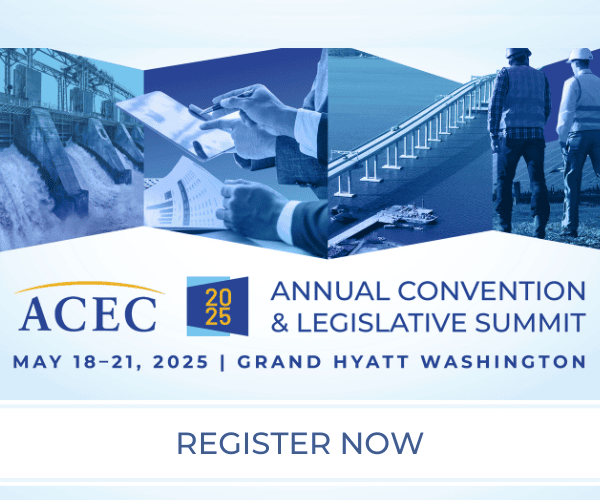ACEC News / Market Forecast
June 26, 2020
ACEC Research Institute Roundtable Forecasts Substantial Changes to Building Design
In the ACEC Research Institute’s second expert roundtable looking at the Post-COVID-19 engineering industry, the panelists discussed The Buildings We Live and Work In, forecasting that the pandemic will force substantial retrofitting of existing buildings and significant design changes to new buildings to enhance post-pandemic safety and comfort for occupants.
More than 100 ACEC members listened in on the discussion on Thursday among Dino DeFeo, managing partner, AKF; Peter DiMaggio, co-CEO, Thornton Tomasetti; Arathi Gowda, associate director, Skidmore, Owings & Merrill; and Kate Wittels, partner, HR&A Advisors. Joseph Bates of the ACEC Research Institute moderated the discussion.
Panelists said remote working has become a new normal workplace due to COVID-19, but working from the office will remain.
DeFeo predicted more decentralized offices and that some headquarters facilities may no longer be as massive as before, “but you still might need office space for a collaboration area or a conference center. I think [this trend is] going to continue to accelerate until there is a vaccine. A lot of people won’t be comfortable coming back to the office until that’s the case.”
Gowda noted the concern that working remotely inhibits person-to-person collaboration. “Engineering, architecture, planning, are collaborative disciplines and there was always this idea that you had to have the groupthink in the office,” she said. “Although we all have experienced some things that are a little less efficient remotely, people also are seeing that we also can be very collaborative in our home environment.”
Kate Wittels noted how the overall role of the physical office will evolve. “That’s really what we need to figure out,” she said. “And that will change how offices are laid out, since we had to produce everything in the office before.”
Panelists agreed that the pandemic will force building owners to alter workplace and occupancy designs such as shared spaces, along with issues involving elevators, workplace kitchens and bathrooms, and that those alternations would create retrofitting opportunities for engineers.
The long-time engineering focus on energy efficiency in building design will also need to change, said DeFeo. “We’re going to start spending more time looking at the wellbeing of the building occupants. We’re going to have to give greater attention to ventilation rates, greater air changes, and higher humidity because we’re finding that humidification is great for the wellbeing of the person, regardless of a pandemic or not.”
DiMaggio said the design community is already responding to the crisis. “After 9/11, it took us a long time to say, ‘we’re going to go back into a high-rise building’,” he said. “The speed at which the design community has started to attack today’s problem is a positive thing. I’m excited to see where this ends up because we’re not stuck on the problem. We’re already talking about the solutions.”
Panelists noted that many future workplace solutions also must factor in conditions of public transportation. “Ultimately we’ll figure out a way to safely transit and then we’ll get back to where we were,” DiMaggio said. “But it’s a tough challenge to keep public transportation safe.”
Wittles emphasized the resiliency of the public to adapt to any future new normal requirements. “We’ve changed so quickly from working in the office to working from home that I think we can change our behavior to adapt to anything.”
Click here to stream “The Buildings We Live and Work In” roundtable.
All comments to blog posts will be moderated by ACEC staff.







